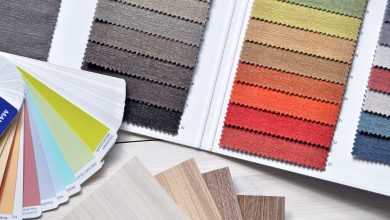Process of Owning Personalize Challenge Coins

Designing a personalized challenge coin entails several crucial procedures to ensure the end result fulfills your expectations. The first step is conceptualization, where you decide on the overall theme and purpose of the coin. The next step is deciding what imagery to include on your coin. It could be anything from military insignias to a team logo.
Designing Challenge
Custom challenge coins are a timeless and iconic way to celebrate your military unit, law enforcement, sports, business team, or event. The military originally used this tradition, but has since spread to many other organizations, companies, schools, and colleges. They are the perfect reward or recognition gift for anyone who deserves a token of appreciation.
One of the most important steps in the process is deciding on the design for your coin. Many people choose to have a logo or emblem on the coin, while others opt for a more symbolic image or text. Some also decide to add an element of color to their coin. It could be something as simple as a metallic background or something more intricate, such as a 3D image or holographic imagery. Once the challenge coin design has been finalized, the coin-maker will begin the production process. It may involve engraving your chosen artwork onto the coin, or if you decide to have a 2D image, the graphic artist will create a vector version of it for cutting purposes.
Then, the coin-maker will add a color background and other details to complete the coin’s look and feel. In choosing a shape for your coin, you must determine if you want a soft or hard enamel finish. Soft enamel is a more durable paint but has less of a dramatic appearance.
Hard enamel is often chosen for police or sheriff’s office challenge coins to resemble their badges. This type of finish is a more expensive option.
Plating
Once the coin design is finalized, it’s time to plate the coin. It adds the desired metal color to the coin’s surface, typically through pad printing or laser engraving. These methods are also used to etch fine details onto the coin, including text and other elements. The type of plating you choose will greatly affect how your custom challenge coin looks. For example, polished platings are shiny and reflective. Antique plates, on the other hand, have a darker finish in the recessed areas of the coin’s design, creating a more eye-catching contrast level.
Another cool option for plating a custom challenge coin is to add a unique edge. It is done either as part of the die-striking process or afterward, based on the intricacy of the coin’s design. Popular edges include oblique lines, bevel cuts, diamond cross cuts, and spur amounts. Once the coin is plated, it’s time to add the final details to make your custom challenge coin unique. For example, add a special message or seal representing your organization. Consider adding a 3D element to give the coin extra depth and dimension. In addition, select a finishing option such as satin, antique, or sandblasted.
Proofing
Once you have finalized the design and plating options for your custom challenge coin, it’s time to request your first proof of artwork. It will allow you to double-check and make any necessary changes to your original idea so that the final coin will be what you had in mind. Another important part of the coin design process is choosing the type of metal you want your coin made from. Although it might not seem like a major choice, it can significantly affect your personalized challenge coin’s appearance and feel.
The possibilities are endless when deciding what visual content you want on your custom challenge coin. Emblems, flags, images, and colors are all popular choices, but you can add text if you’d like. Organization mottos, slogans, or even a special date can all be added to the coin for additional meaning and purpose. You can select a custom shape if you’d like a challenge coin that isn’t in the typical circle shape. Although this may not affect the coin’s purpose or meaning, it can affect how it is carried and used. For example, a square coin might be easier to carry in a pocket or bag, but it might also be more difficult to track and easily Nominymph misplaced.
Production
After the coin design is completed, the metal material must be selected. The most popular challenge coin options are gold and silver, while other materials and colors can also be used in their production. It is also important to consider the size of the coin. If the coin is to be worn, it must be a little larger to see all the details. The next step in the process is striking. The blank coin is placed between the dies and hit with tremendous pressure to create the final coin design. The coin is struck multiple times to ensure that all details are accurate and that the proper depth has been achieved.
Once the coin is struck, it will go through a polishing and deburring process to remove any sharp edges that may have been created during the striking process. It will then be plated. Plating is another important aspect of the coin’s design, as it can set the tone and vision for the coin. Several different types of plating are available, including gold and silver, matte, glitter, glow, and translucent enamel. You can even have the coin dual-plated in two finishes, such as nickel and gold – or you can choose to use a single finish for the entire joinpd coin.




